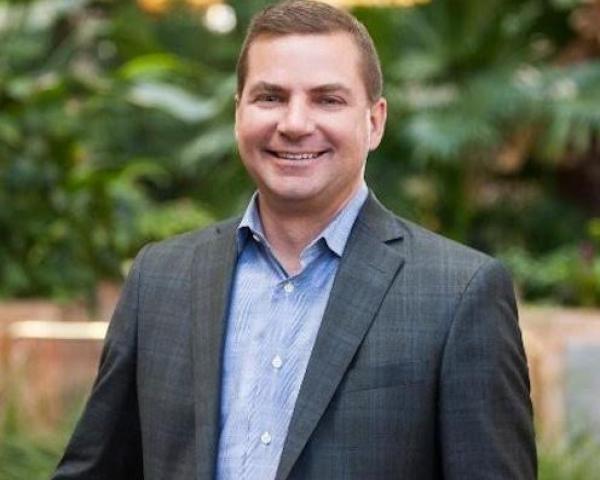KEY TAKEAWAYS:
--A surge in property damage from natural catastrophes has made it nearly impossible to get adequate coverage at affordable prices, creating an opportunity for new approaches to risk transfer.
--Economic pressures have created a perfect storm: Businesses need to cut costs, including on insurance, but insurers must make sure their prices are realistic.
--Filling the gap in the market is a burst of investment of capital and expertise in parametric insurance, which will accelerate it from new entry to mass market in the years to come.
----------
Since launching FloodFlash in the U.S. earlier this year, I've been surprised to find that brokers and agents are familiar with parametric insurance. Many have even placed a parametric storm policy, based on hurricane or wind severity.
This is a stark contrast to our experience in the U.K. The majority of SME and mid-market agents there aren’t familiar with parametric insurance at all.
One thing they share with their colleagues in the U.S. is that flood parametrics is entirely new. When introducing FloodFlash, we most often hear one of two reactions. First, that it’s too good to be true. Second, why has nobody considered doing this before?
The first reaction is simple to stave off with our A-rated insurance support, rapid payout claims and excellent service record in the U.K. The second is more difficult to answer. Parametric insurance has been around for 20-plus years in one form or another. By that token, it would make sense that parametric flood products would have come a long while ago.
Right now, the insurance and wider markets have created the perfect conditions for parametric insurance to grow. Talking to our customers, agents, partners and investors, three trends emerged: a challenging insurance market; the cost-of-living crisis; and a surge in investment in parametric insurance.
A challenging insurance market
80% of the world’s flood damage goes uninsured every year. That’s $58 billion in unprotected losses. In the U.S., the picture is often even more stark. Aon estimates that last year was the fifth costliest on record from an environmental catastrophe perspective, and flooding dominated the uninsured losses.
Those checking the receipts found out that only $1 billion of the $30 billion in flood losses in California were covered by insurance. When Hurricane Ian swept across the Gulf of Mexico, uninsured residential losses alone ranged between $10 billion and $17 billion. Guy Carpenter data suggests that up to 67% of hurricane losses in the U.S. were uninsured between 2012 and 2021.
The view for business isn’t much better – but it’s much blurrier. Most attempts to understand the impact of flooding focus on residential property, so insight on business flood risk is limited. When we carried out research with U.S. business leaders worried about flooding, 49% agreed they find it difficult to get affordable coverage for their property. The exodus of capacity providers and insurers from high-risk states stands to make things much worse throughout the year.
The statistics all point to the same conclusion: If you have a flood risk in the U.S. (and National Flood Insurance Program coverage isn’t sufficient), it can be impossible to get affordable coverage. This leads to big insurance gaps and massive losses. Drill into the statistics and you’ll find millions of lives and livelihoods that risk being destroyed when the water rises.
Sounds bad right? It’s not getting any better. Urbanization, increasingly extreme weather patterns and climate change are all making it harder to effectively underwrite flood policies. That means that alternative risk transfer solutions like parametric insurance must form part of the response. Without them, the flood insurance gap will continue to grow, and more and more livelihoods will be destroyed in the years to come.
The cost-of-living crisis
After several years of huge upheaval, many American businesses are feeling the financial strain like never before.
According to Aon data from October, 79% of business leaders think the country will face a recession in the next year. Only 35% claimed to be prepared.
Cash-strapped businesses find it harder to secure affordable coverage. Not only that, the rising price of recovery and claims inflation have put huge pressure on agents and their customers to make sure insured values are correct. This creates a perfect storm, where businesses can be paying higher premiums for coverage levels that don’t meet their recovery needs. When customers want to keep insured limits, our partner agents have reported rises of up to 300% in real term costs.
It’s not just brokers feeling the strain. Insurers are also under pressure to maintain a sustainable book. The threat of underinsurance can drive a wedge between insurer and customer, and when uncertainly looms, as it does for many flood risks, the answer is often a reduction in coverage and rising deductibles.
Parametric insurance offers an alternative from the trend of premium increases and limit issues. The premium benefits of parametric insurance are twofold. First, the increased simplicity and certainty in the underwriting (all claims values are known before a flood) means that capacity is more readily available in high-risk areas. Second, the flexibility that parametric policies afford mean that customers can select parametric triggers based on their risk and their budget.
See also: Property Underwriting for Extreme Weather
Investment in parametric coverage
The flood insurance market conditions are ripe, and customers are looking for greater flexibility. But can insurance providers deliver? The answer is an unequivocal yes. Investment in parametric solutions has seen massive growth in recent years. Equity raises by Descartes Underwriting, Parsyl and Arbol have set the stage for parametric market growth. The FloodFlash Series A raise announced last year only adds to the argument.
It isn’t just VC money that is capitalizing on the growth opportunity. Insurers and distributors are also getting in on the action. Reinsurance dollars dedicated to more exposed risks are shifting toward parametric providers. Similarly, brokers and agents across the country are hungry to learn about and distribute coverage that can help their clients most. According to Instech, nearly a third of the largest brokers globally mention parametric on their website, including half of the top 50 brokers.
This investment of capital, expertise and platform will accelerate the growth in the years to come as parametric flood coverage goes from new entry to mass market. Experts recently interviewed by Wharton University Risk Management claim the flood insurance market “is so large and so underserved that there’s virtually limitless potential for growth.”
If you agree that parametric insurance holds the key to that growth, I’d love to hear from you.






